Which Cable Do I Need for 144hz?

Which Cable Do I Need for 144hz?
If you’re a gamer, you know the importance of having the best possible gaming experience. And that includes having the proper hardware and accessories.
One of the most essential pieces of equipment for gamers is their monitor. The higher the refresh rate, the smoother and more responsive your gameplay will be. But with so many different cables, knowing which one you need to achieve 144Hz can be unclear.
So, which cable do you need for 144Hz? The answer depends on a few factors, including your graphics card and monitor specifications. In this article, we’ll break down the types of cables available and help you determine which one is right for you.
Whether you’re a competitive gamer or just looking for a better visual experience, understanding which cable to use can make all the difference in your gameplay. So let’s get started!
Vga
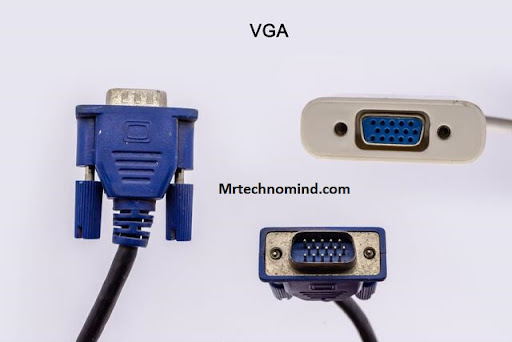
| VGA |
| Video Graphics Array |
| Native resolution: 640×480 pixels |
| Introduced in 1987 |
| Analog technology |
| Maximum resolution: 2048×1536 pixels |
| Mostly obsolete |
VGA cables? Ha! You might as well be using two tin cans and a string for all the good that will do you. If you’re looking to get the most out of your 144hz monitor, VGA won’t cut it.
Sure, it was great back when CRT monitors were king, but those days are long gone.
But why is VGA so outdated? Well, for starters, it’s an analogue signal. That means that your graphics card has to convert its digital output into an analogue signal that can be transmitted over the cable. And then your monitor has to convert that analogue signal back into a digital one to display the image correctly. This conversion takes time and can lead to a loss of image quality.
If you want to take full advantage of your 144hz monitor, you’ll need something better than VGA. Luckily, there are other options available that offer higher bandwidth and better image quality. DVI is the next step up from VGA, which we’ll explore in the next section.
Dvi
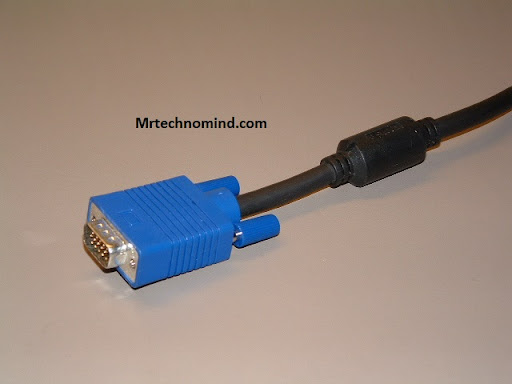
| DVI |
|---|
| Digital Visual Interface |
| Introduced |
| Analog or Digital |
| Maximum Resolution |
| Types |
| Commonly Used in |
| Current Status |
If you want to achieve a 144hz refresh rate on your monitor, a DVI cable may be the solution.
DVI, or Digital Visual Interface, is a digital connection that can support high resolution and fast refresh rates. It’s important to note that not all DVI cables are created equal. Look for a Dual-Link DVI cable to ensure you get the best possible performance.
Here are four factors to consider when choosing a Dual-Link DVI cable:
- Resolution: Make sure the cable supports the resolution of your monitor.
- Cable Length: Longer lines can lead to signal degradation, so choose an appropriate length for your setup.
- Quality of Materials: Higher-quality cables offer better performance and durability.
- Brand Reputation: Look for reputable brands with positive reviews to ensure you get a reliable product.
If you want to achieve 144hz on your monitor, using a Dual-Link DVI cable is worth considering. Just make sure you choose one that meets your specific needs and preferences.
Moving onto HDMI…
Hdmi
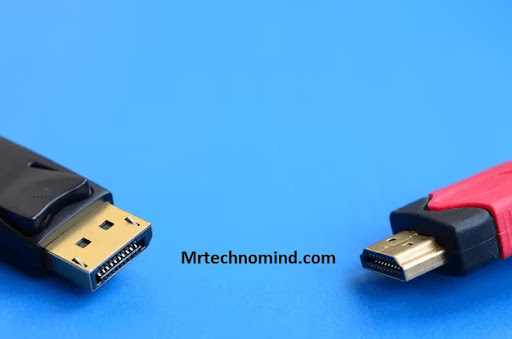
For example, if you have a computer with a graphics card that supports 144Hz and a monitor that also supports 144Hz, you will need an HDMI cable to handle the bandwidth required for this refresh rate. Not all HDMI cables are created equal, so it’s essential to check the specifications of the cable before purchasing.
To help you choose the suitable HDMI cable for your needs, here is a table comparing different types of HDMI cables:
| Cable Type | Bandwidth | Maximum Resolution |
| Standard | 10.2 Gbps | 1080p |
| High Speed | 18 Gbps | 4K/60Hz |
| Premium | 18 Gbps | 4K/120Hz or higher |
As you can see from the table above, a standard HDMI cable may not provide enough bandwidth for a 144Hz display. You will need at least a high-speed HDMI cable to support this refresh rate, and if you want to future-proof your setup, consider getting a premium HDMI cable with even more bandwidth.
In addition to choosing the suitable cable, it’s essential to ensure that your graphics card and monitor are configured correctly to output and receive a 144Hz signal. This may involve entering your computer’s settings or using software provided by your graphics card manufacturer. With the proper setup and equipment, however, you can enjoy smooth and responsive gameplay at up to 144 frames per second.
Moving on to displayport…
Display Port
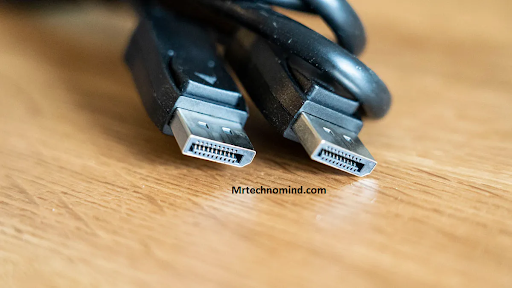
If you want a cable supporting 144hz, then a DisplayPort cable is your best option. It is known for its high bandwidth and can easily handle fast refresh rates. This type of cable is commonly used in gaming monitors and graphics cards.
A DisplayPort cable has a locking mechanism that prevents it from being accidentally disconnected. It also supports audio transmission, so you don’t need an additional line for sound. If your monitor has a DisplayPort input, then make sure to use it instead of HDMI or DVI to take full advantage of the 144hz refresh rate.
To summarize, if you want to experience smooth gameplay with a 144hz monitor, get yourself a DisplayPort cable. It offers stable data transfer and supports high-speed refresh rates without lag or stuttering.
Here are three reasons why you should choose a DisplayPort cable:
– It has higher bandwidth compared to other cables.
– It comes with a locking mechanism for a secure connection.
– It supports audio transmission without needing another cable.
Now that you know which cable to use for 144hz, let’s talk about the maximum interface bandwidth supported by different wires.
Maximum Interface Bandwidth
To achieve 144hz, you need a cable that can support a high interface bandwidth. This means that the cable needs to be able to transfer large amounts of data quickly and efficiently.
The most common cable that is capable of this is DisplayPort 1.4. DisplayPort 1.4 has a maximum bandwidth of 32.4 Gbps, allowing resolutions up to 8K at 60Hz or 4K at 144Hz. It also supports HDR and variable refresh rate technologies like AMD FreeSync and Nvidia G-Sync, which can improve overall gaming performance.
Other cables like HDMI and DVI may also be capable of supporting 144hz, but it depends on their version and the specific hardware being used. It’s essential to check the specifications of both your monitor and graphics card to ensure you are using the correct cable for optimal performance.
Regarding adapters for achieving 144hz, it’s important to note that not all adapters will be capable of this high refresh rate. If you need an adapter, ensure it is designed explicitly for 144hz or higher refresh rates and supports DisplayPort or HDMI versions compatible with your hardware. An incompatible adapter could result in lower frame rates or other performance issues.
Adapters for 144hz
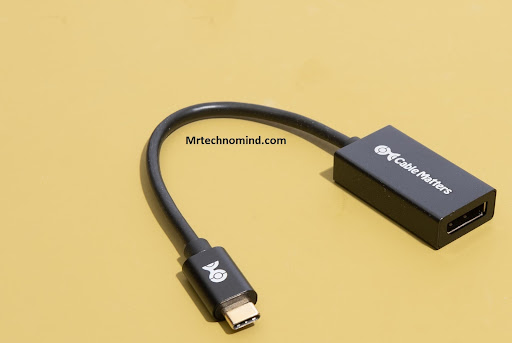
Now that we know the maximum interface bandwidth, let’s discuss the cable you need for 144Hz. Imagine you’re a Formula One driver, your car is your computer. You wouldn’t want to use a regular gas station pump to fill up your race car, would you? The same goes for your monitor cable – if you want to achieve maximum performance, you need the right tool.
So what cable do you need for 144Hz? The answer is simple: DisplayPort 1.2 or HDMI 1.4 (or higher). These cables are designed to handle high refresh rates and offer enough bandwidth to deliver crisp, clear images without lag or stuttering.
If you’re using an older cable, like VGA or DVI, you won’t be able to take advantage of all the benefits of a high refresh rate monitor.
Here are three things to keep in mind when choosing a cable for 144Hz:
- Make sure your graphics card supports the cable type you choose.
- Check the line length – longer lines can sometimes cause signal degradation.
- Look for lines certified by VESA or HDMI LLC for optimal performance.
In summary, if you want to get the most out of your high refresh rate monitor, ensure you’re using a DisplayPort 1.2 or HDMI 1.4 (or higher) cable. Don’t overlook this crucial component in achieving peak performance from your gaming setup!
Frequently Asked Questions
1. Can I Use a 60hz Cable for a 144hz Monitor?
Yes, you can use a 60Hz cable for a 144Hz monitor, but it won’t be able to transmit the total 144Hz refresh rate.
To take advantage of the high refresh rate, you must use a cable capable of transmitting at least 144Hz.
This means you will need either a DisplayPort or HDMI cable supporting at least version 1.4.
It’s important to note that not all cables are created equal, so make sure to check the specifications before purchasing one for your setup.
2. Do I Need a Specific Graphics Card to Support 144hz?
To support a 144Hz monitor, you will need a graphics card to handle the higher refresh rate.
While most modern GPUs should be able to support 144Hz, it’s essential to check the specific requirements for your monitor and games to ensure that your graphics card can keep up with the demands.
Additionally, ensure you have the appropriate ports on your graphics card to connect to your monitors, such as DisplayPort or HDMI 2.0.
A powerful graphics card is essential for achieving a smooth and responsive gaming experience at 144Hz.
3. What is the Difference Between 144hz and 240hz?
When it comes to high refresh rate monitors, there are a few options available on the market. Two of the most popular choices are 144Hz and 240Hz.
The main difference between these two is the number of times the monitor refreshes its image per second. A 144Hz monitor can display up to 144 frames per second, while a 240Hz monitor can display up to 240 frames per second.
This results in smoother motion and less blur on fast-moving images, making them ideal for gamers or anyone who needs a quick response time. However, remember you’ll need a powerful graphics card for these high refresh rates.
4. Can I Use a Cable Splitter for a Dual Monitor Setup With 144hz?
If you want to upgrade your workstation, a dual monitor setup with 144Hz is a great way to boost productivity and enhance your gaming experience. However, before you start setting up your monitors, it’s essential to consider the type of cable splitter you’ll need.
While some splitters may work for lower refresh rates, they may not be suitable for 144Hz. Using an active DisplayPort splitter or an HDMI 2.0 splitter with support for 1080p at 144Hz is recommended.
Don’t settle for a subpar set-up – invest in the right equipment to take advantage of all the benefits of a dual monitor setup with high refresh rates!
5. Is There a Difference in Cable Quality Between Brands?
There may be a difference in cable quality between brands when using them for gaming monitors.
Some cables may be unable to handle the bandwidth required for 144hz, resulting in screen tearing and other visual issues.
Researching and investing in a high-quality cable from a reputable brand is essential to ensure the best performance for your gaming setup.
Conclusion
In conclusion, choosing the suitable cable for a 144Hz monitor can significantly enhance your gaming or viewing experience. While it is possible to use a 60Hz line, it may not support the full capabilities of your monitor. It’s essential to ensure your graphics card and cable are compatible with 144Hz to enjoy its benefits fully.
When selecting a cable, it’s essential to consider factors such as length, durability, and brand reputation. A high-quality cable can make a noticeable difference in image quality and stability. So don’t skimp on the line – invest in one that provides crystal-clear imagery and smooth performance.
With the suitable cable, you’ll be ready to immerse yourself in your favourite games and videos like never before.